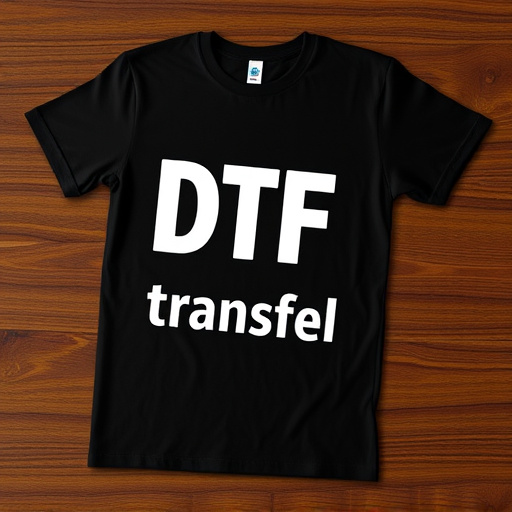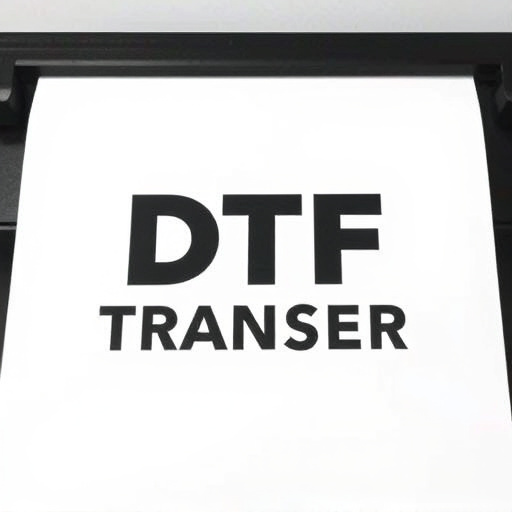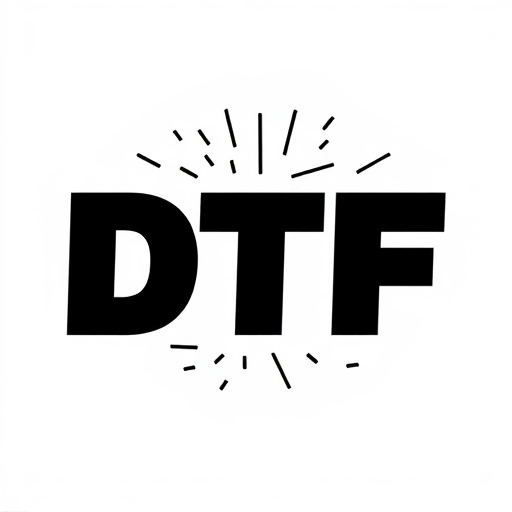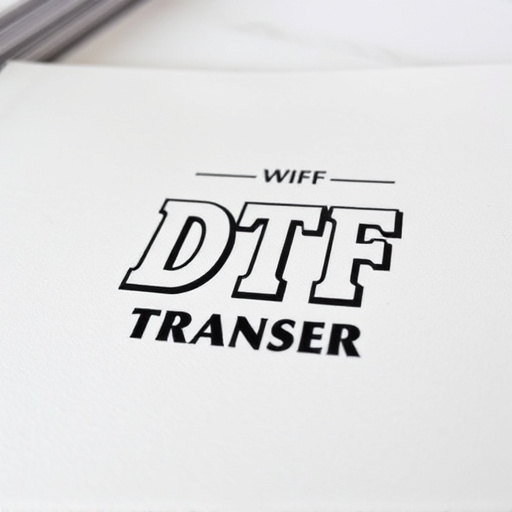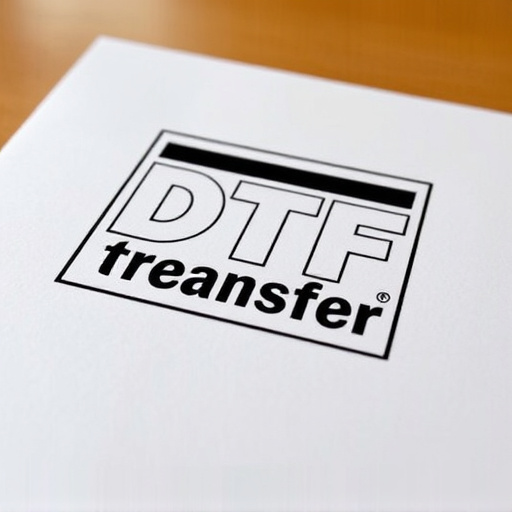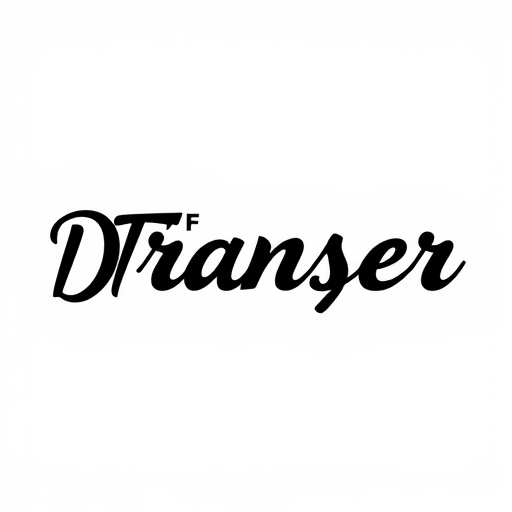DTF Transfers revolutionize textile printing by offering a swift, adaptable method for applying designs to polyester fabrics, bypassing traditional screens. The process involves digitally preparing the design, creating a mirrored image for accurate alignment, and precisely bonding the transfer film with heat. Specialized adhesives on DTF films strongly bond with polyester fibers, ensuring vibrant colors and sharp details that withstand washing, drying, and wear. DTF printing is ideal for quick production of various polyester items, offering superior color vibrancy and precision. Choosing DTF inks designed for polyester ensures optimal adhesion and color vibrancy; testing on smaller samples is recommended. Applying DTF technology correctly involves pre-heating fabric, maintaining proper pressure/temperature during printing, using high-quality presses, and allowing adequate cooling time to prevent smudging or fading. Future advancements focus on enhanced ink formulations and improved digital printing techniques like aerosol printing and UV curing, democratizing custom fabric printing.
“Discover the revolutionary world of DTF (Direct-to-Fabric) transfers, a game-changer in textile printing. This article unravels the secrets behind this innovative process, designed for polyester fabrics. From the science of adhesion to the benefits and best practices, we explore why DTF is a top choice for professionals. Learn about specific ink formulations and future trends that are reshaping the landscape of fabric printing. Uncover how DTF transfers create vibrant, lasting designs on a variety of polyester-based materials.”
- Understanding DTF Transfers: An Overview
- The Science Behind Adhesion to Polyester Fabrics
- Benefits of Using DTF for Textile Printing
- Choosing the Right DTF Ink Formulations
- Application Techniques and Best Practices
- Future Trends in DTF Transfer Technology
Understanding DTF Transfers: An Overview

DTF (Direct-to-Fabric) Transfers have revolutionized the way we print on textiles, offering a highly efficient and versatile method for applying designs to polyester fabrics. This modern technique involves transferring ink directly from a digital image onto the fabric’s surface using heat and pressure. Unlike traditional printing methods, DTF transfers eliminate the need for separate screens or plates, making it an accessible option for small-batch production and on-demand printing.
The process starts with preparing the design digitally, ensuring it is optimized for the specific print requirements of polyester fabrics. The image is then mirrored to account for the heat press, as the transfer must be flipped to ensure the ink aligns correctly during application. Once ready, the DTF transfer film, containing the designed pattern, is positioned onto the fabric and bonded using a heated press, resulting in a crisp, durable print that can withstand various washing and wearing conditions.
The Science Behind Adhesion to Polyester Fabrics

The adhesion of film transfers to polyester fabrics is a complex scientific process, made possible by the unique properties of both materials. DTF (Direct-to-Fabric) Transfer technology leverages the smooth, non-porous surface of polyester to achieve strong and long-lasting bond strengths. Polyester’s high chemical resistance and low moisture absorption rate create an ideal substrate for direct printing, ensuring vibrant colors and sharp details adhere securely without seeping into the fabric.
The key to successful adhesion lies in the precise formulation of the transfer film. Specialized adhesives are engineered to interact with the polyester fiber surface, forming strong molecular bonds. This involves a careful balance of components that promote wetting, chemical interaction, and cross-linking, resulting in a durable bond that withstands washing, drying, and even outdoor exposure.
Benefits of Using DTF for Textile Printing

Direct-to-fabric (DTF) printing, particularly using DTF transfers formulated for polyester fabrics, offers a multitude of advantages in the textile industry. One of its key benefits is speed and efficiency; DTF technology allows for quick printing on various polyester materials, including clothing, accessories, and home textiles. This makes it an ideal solution for businesses aiming to meet fast-paced demand, especially in trends-driven markets.
Additionally, DTF transfers provide superior color vibrancy and precision, ensuring that designs retain their original brightness and detail. The direct application of ink onto polyester ensures a durable and long-lasting print, resistant to fading and peeling, which is crucial for products intended for prolonged use. This method also enables intricate and detailed patterns, opening up creative possibilities for designers and manufacturers alike.
Choosing the Right DTF Ink Formulations

When selecting DTF (Direct-to-Fabric) ink formulations for film transfers, understanding the unique properties of polyester fabrics is key. Polyester’s smoothness and rigid structure require specialized inks that offer excellent adhesion and color vibrancy. Look for DTF inks designed specifically for polyester, ensuring they provide crisp, long-lasting prints without smudging or fading.
The right formulation should also consider the type of design and its intended use. For intricate graphics and detailed images, high-resolution inks with superior pigment intensity are recommended. Conversely, for more simple or distressed looks, a different ink composition might be suitable. Always refer to manufacturer guidelines and conduct tests on smaller samples to achieve the desired outcome before applying the DTF transfer to larger fabric pieces.
Application Techniques and Best Practices

The application of film transfers, specifically Digital Thermal Transfer (DTF) technology, to polyester fabrics involves a precise and meticulous process. This technique allows for the creation of intricate designs and vibrant colors on various materials, including clothing and accessories. The key lies in understanding the best practices to ensure optimal results. One effective method is pre-heating the polyester fabric before applying the transfer, which prepares the surface for a strong bond. This step is crucial for a long-lasting finish.
When conducting a DTF transfer, it’s essential to maintain proper pressure and temperature during the printing process. Using a high-quality press and ensuring even distribution of heat can prevent smudging or bubbling of the image. Additionally, allowing sufficient time for cooling after printing is vital to avoid warping or fading. Following these techniques guarantees that the film transfer adheres perfectly to polyester fabrics, creating durable and visually appealing designs.
Future Trends in DTF Transfer Technology

The future of Direct-to-Fabric (DTF) transfer technology looks promising, with innovations aimed at enhancing quality and efficiency. One trend is the development of advanced ink formulations that offer better adhesion to various fabrics, including polyester, while maintaining vibrant colors and crisp details. These inks are designed to withstand rigorous washing and drying processes, ensuring long-lasting prints on clothing and other textiles.
Additionally, digital printing techniques in DTF transfer are evolving rapidly, allowing for more intricate and personalized designs. The integration of new technologies like aerosol printing and UV curing can further revolutionize the industry. These advancements promise to democratize custom fabric printing, making it accessible to small businesses and individual artists while driving innovation in apparel design and production.



